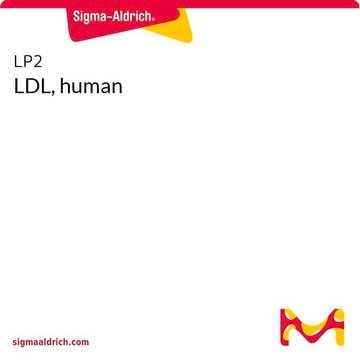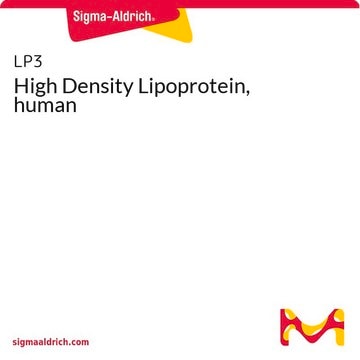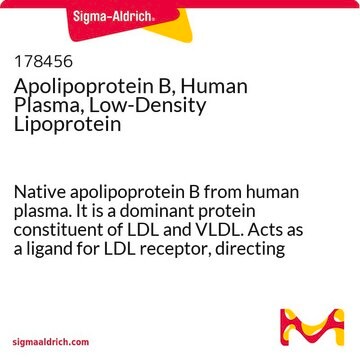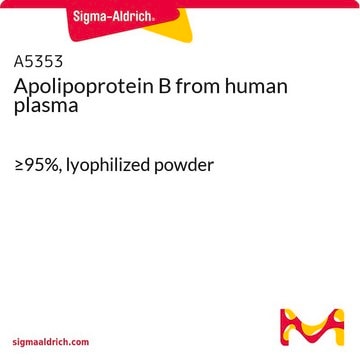L8292
Lipoprotein, low density from human plasma
lyophilized powder
Sinónimos:
β-Lipoprotein, LDL, Low density lipoprotein
About This Item
Productos recomendados
biological source
human plasma
form
lyophilized powder
packaging
vial of ~5 mg protein
technique(s)
cell culture | stem cell: suitable
UniProt accession no.
storage temp.
2-8°C
Gene Information
human ... APOA1(335)
¿Está buscando productos similares? Visita Guía de comparación de productos
General description
Application
- in evaluating its anti-Langerhans cells (LC) differentiation activity in monocyte-derived Langerhans cells (MDLCs)
- in the preparation of oxidized low-density lipoprotein (ox-LDL)
- as a lipoprotein standard in quantifying embryonic cerebrospinal fluid (eCSF) from HH23 embryos by lipid staining
Biochem/physiol Actions
Physical properties
Preparation Note
Disclaimer
Storage Class
11 - Combustible Solids
wgk_germany
WGK 3
flash_point_f
Not applicable
flash_point_c
Not applicable
ppe
Eyeshields, Gloves, type N95 (US)
Certificados de análisis (COA)
Busque Certificados de análisis (COA) introduciendo el número de lote del producto. Los números de lote se encuentran en la etiqueta del producto después de las palabras «Lot» o «Batch»
¿Ya tiene este producto?
Encuentre la documentación para los productos que ha comprado recientemente en la Biblioteca de documentos.
Los clientes también vieron
Artículos
Lipoproteins package cholesterol for transport in plasma, essential for lipid transport and cellular function in the body.
Lipoproteins package cholesterol for transport in plasma, essential for lipid transport and cellular function in the body.
Lipoproteins package cholesterol for transport in plasma, essential for lipid transport and cellular function in the body.
Lipoproteins package cholesterol for transport in plasma, essential for lipid transport and cellular function in the body.
Nuestro equipo de científicos tiene experiencia en todas las áreas de investigación: Ciencias de la vida, Ciencia de los materiales, Síntesis química, Cromatografía, Analítica y muchas otras.
Póngase en contacto con el Servicio técnico